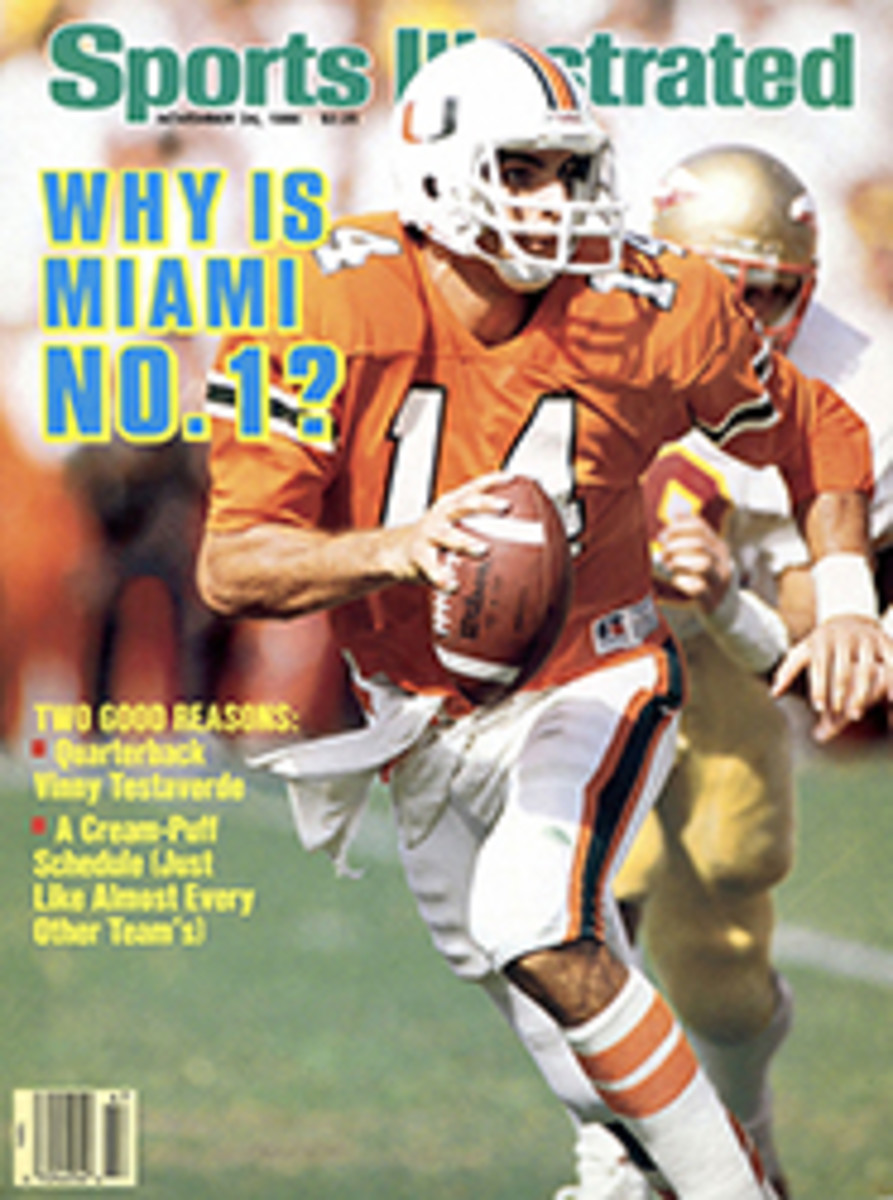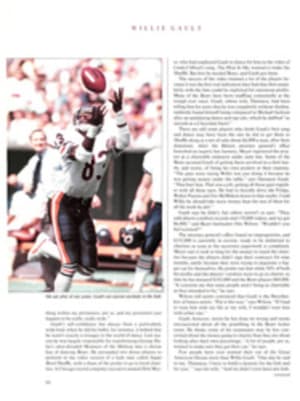
The centers of the storm
New York Knicks coach Hubie Brown can be an impatient, unforgiving sort. Sometimes, in fits of pique, he calls his players the most awful names. If you don't play the game according to Hubie's rules, you hear about it, and if your mother doesn't like it that way, you can leave her home. This m.o. used to work for Brown. But times change.
Hubie has never called Patrick Ewing any of those names, not to his face anyway, even as the Knicks stumbled out of the gate this season and left New York wondering where their messiah had gone. Calling Ewing names would be dumb. And while Hubie is a lot of things, dumb isn't one of them, even if he has turned the best young defensive center in the game into an uncertain forward just so the Knicks can play that trendy new NBA board game called Twin Towers.
Twin Towers was supposed to be fun, new wave, a breakthrough in the boredom-killing business. It hasn't been that way in New York. When the Knicks got off to a 1-6 start, Knick fans began to get impatient with Brown. Between yawns, they began to call him names.
Ewing is guaranteed to be paid $17 million over 6 years, and could earn $30 million over 10 if certain criteria are met. He insists that he alone can't be the messiah, and he might be right about that. But every reverend from Pat Robertson to Jesse Jackson knows that 17 mil should buy a lot of salvation. Somebody ought to tell Hubie that messiahs don't play forward in New York. Never have. The Knicks made Willis Reed a forward in 1965 when Walt Bellamy came to town as the center. It wasn't until they traded Bellamy and put Reed back in the middle that the vaunted Knicks of the early '70s took shape.
Because the current Knicks aren't likely to trade their 7'1" center, Bill Cartwright, Ewing, the more mobile of the towers, draws the short straw on defense. Through four years at Georgetown and one in New York, the painted rectangle was Ewing's turf. He was the ultimate air-traffic controller. In those days one tower was plenty. While he was becoming the NBA's Rookie of the Year last season, his Knick teammates took to calling him Beast. Then came Cartwright's return from two seasons of injuries and Hubie's bright idea, which left Ewing chasing smaller, quicker forwards around the floor.
It fell to Ernie Grunfeld, a former Knick forward who is a member of their radio broadcast team, to take Ewing aside and explain things. "Look, Patrick," said Grunfeld, "you've got to do what got you where you are. You've got to intimidate again. You've got to put the fear into people around the basket. Please. No more Mr. Nice Guy."
It would have been more appropriate if this good advice had come directly from the coach, but while Ewing dutifully obeys Brown's directives, he also says they "have no relationship" outside of that. It didn't matter on Nov. 11 at Madison Square Garden. Ewing did what only he can do: He took control of the game without scoring points. And the Knicks slogged to their second win, 111-105, over the Phoenix Suns. "They won because he dominated," said Grunfeld. "And the way Patrick dominates doesn't always show up in the box score." The box score showed that Ewing scored just 7 points, but he had 11 rebounds and, of the Knicks' 13 team rebounds, he was responsible for at least 10. The box score also credited him with five blocked shots, but he had altered or discouraged at least that many more.
Still, Brown fulminated, "That's the first time this year he's played like that. This is Game 8. When the big guy can play without pain, then we'll jell. I don't know when that will be. Ask him." Brown pointed toward Ewing as the former center padded by. See. Hubie doesn't ask. Hubie tells.
Ewing had kept two ice bags on his knees for 15 minutes after the Phoenix game. And yes, he had arthroscopic surgery on his right knee last March 14, which kept him on the shelf for 32 games. But he says, "I'm tired of people asking about my knees. They don't keep me from playing. Hey, I couldn't wait for the season to start. But I'm a center. That's what I am. I'm not a forward. I miss being inside. I'm going out chasing guys like Xavier McDaniel and Terry Cummings. It's rough. That's not me."
Brown is a great X's and O's coach, as anybody who has ever talked with Hubie knows. But in trying to make sure he can match up with the Celtics and Rockets (he can't), Brown puts the Knicks at risk against teams like Milwaukee, a relatively small mobile outfit with plenty of good shooters, to whom the Knicks lost on Friday, 106-103. With Ewing in the corner instead of down low piling up blocks and rebounds, the Knicks' transition game simply did not exist. And since he was out chasing Cummings far from the paint, Ewing got only four rebounds and one block all night.
The Knicks' lack of a transition game, though, is hardly their only shortcoming. Take their backcourt—please. Until last week only Rory Sparrow could dribble, change direction and look up at the same time—until the Knicks acquired Gerald Henderson from Seattle for a second-round draft pick in 1990 and a probable switch of first-rounders in '87. Gerald Wilkins has talent but often fails to control it, and Trent Tucker adds little to the corps. No one can shoot with consistency, which is an imperative on a team that can't—or isn't allowed to—run.
The Knicks struggle so hard it's exhausting just watching them try to score. There is no vitality to their game. No gun. No run. No fun. There is a lot of fear, though. They are playing not to make a mistake, not to break Hubie's sacred plays, while the coach does the Big Shoe Dance on the sideline.
As Hubie watched in Milwaukee on Friday night, Ewing got the ball down low with five seconds left. The Knicks were down by one. Ewing deftly spun past Cummings and powered up to the ring. Center Jack Sikma came over to help, but he knew better. A foul could cost the Bucks three points. "I wasn't even going to go up," said Sikma. "What for? In fact, I turned my head. I didn't look. Then there was the ball trickling off the rim."
It was an attitude shot. Ewing blew it. "It felt like Patrick was confused," said Cummings. The old Ewing would have brought the Mecca down with a concussive slam that people could have told their grandchildren about. This Ewing, this tentative forward person, tried a half layup. He missed.
Brown has always been at his best coaching overachievers, mutts, guys who couldn't be sure they weren't all those horrible things that Hubie was calling them. But now he has got a dominant center, a messiah. He's coaching talent, which isn't easy to do if your ego gets in the way. When you're coaching talent, you don't change it. You adapt yourself, you change. Hubie hasn't. He has heard that Ewing is unhappy playing forward, and this is what he told Newsday's Gary Binford about that: "Some great names in basketball—Bob Thornton, [Chris] McNealy, James Bailey, [Ken] Bannister, Eddie Wilkins and Ron Cavenall—have been able to play both positions. So I don't want to hear that crap. It's the dumbest thing I ever heard of.... If it's so hard, how come these Einsteins could do it?...I don't want to hear that [Ewing's] out of position."
"Hubie's teams tend to be slow starters," says Knicks G.M. Scotty Stirling. "Just wait. By January, this team will bear absolutely no resemblance to the team you see now."
If the Knicks don't get better, and soon, that new look could have something to do with a new center—and a new coach.
PHOTO
MANNY MILLAN
As Sikma backed down, Ewing flubbed the potential game-winning layup in Milwaukee.
PHOTO
JOHN BIEVER
When Brown is not seeing red, he's blue.
PHOTO
JOHN BIEVER
Cartwright has never been a dominator.
PHOTO
JOHN BIEVER
When Ewing chases smaller guys like Cummings, he leaves a lot of space in the paint.

